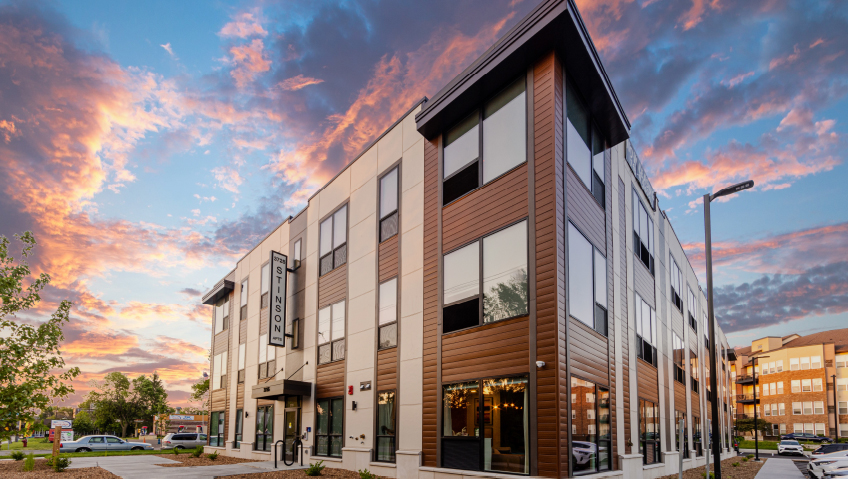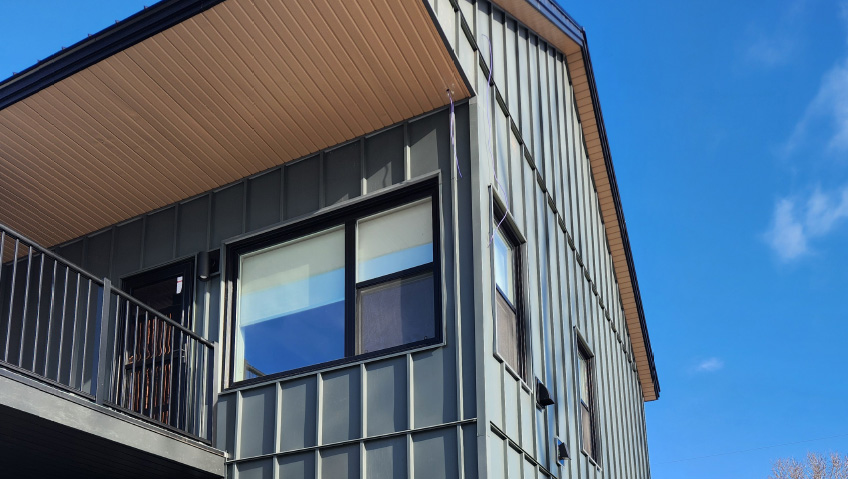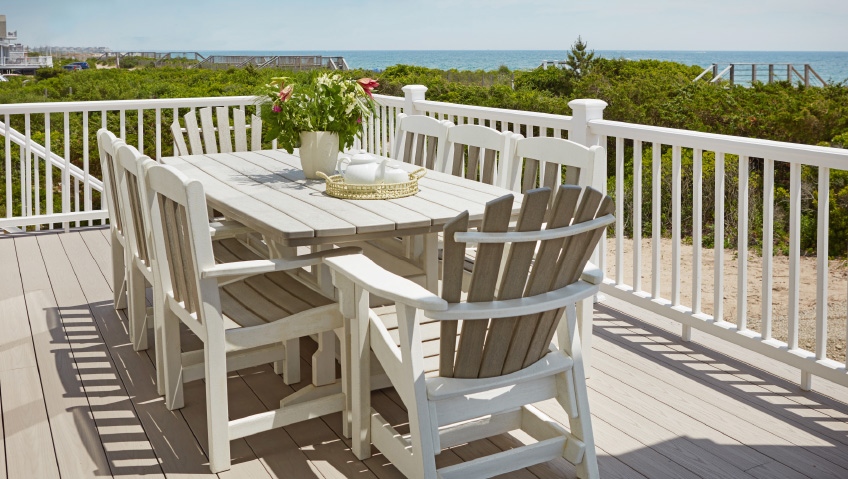Architecture is about more than the art and science of designing and constructing buildings; it is about people—and for people. From large commercial and retail spaces to modest, affordable housing, few firms are more passionate about this people industry than Minneapolis, Minnesota-based DJR.
Dean Dovolis, upon receiving his bachelor’s degree in architecture and environmental design from the University of Minnesota-Twin Cities and his master’s degree in architecture and urban design from Harvard, knew he didn’t want to work for anyone else. This led to him founding DJR upon graduation, and never once looking back.
“I thought, ‘if I’m going to fail, I’m going to do it on my own,’ so DJR was founded,” says Dovolis, who created the company in 1985, registering it the following year.
The way forward
As DJR’s founder, principal, and chief executive officer, Dovolis’ passionate concern for environmental design and the future of the planet—forged during the oil crisis of the late 1970s and 1980s, and consequent embargoes—has from the start suffused the entire range of services this highly successful architectural firm provides.
While global warming per se wasn’t on many people’s radar in the ’80s, questions about sustainability were becoming pressing. Wild fluctuations in fuel prices, rising interest rates, and out-of-sight house prices fueled growing awareness of real-world issues in the younger Dovolis.
“You became very aware of it, and how to map the future,” he says. “Because of those events, I thought that we needed to have more balance in economics and societies. That was the impetus for studying those areas.”
Community collaboration
Since its inception almost 40 years ago, DJR as a company has remained passionate about architecture and working for the benefit of others. One of the company’s first large-scale projects was in the Phillips neighborhood of Minneapolis, where the grassroots American Indian Movement (AIM)—with its timely focus on critical issues like poverty and preserving Indigenous culture—was founded in the late 1960s.
It was against this backdrop that DJR “collaborated with the community to develop housing and urban design strategies aimed at promoting development in a traditionally Native American area,” as the firm notes on its website.
Becoming the sole source of architecture for the Phillips neighborhood, DJR soon took on the many affordable housing projects, community planning projects, and environmental works that became so influential in the culture of the firm.
Heavy involvement in community organization, planning, and mapping further fueled DJR’s commitment to affordable, sustainable, and modular housing. “All those factors became part of the culture in the early years, and it’s carried forward ever since,” says Dovolis, adding that DJR is presently investigating 3D and printed housing initiatives.
Proud of its work benefiting underserved local communities, DJR has also taken on international projects in Djibouti, Africa. Driven by the Djibouti government, the SeaFlower project involves 80 hectares of reclaimed land/tidal oceanfront waterway being developed as a residential and commercial hub.
Making it modular
In many nations, the need for housing is becoming urgent, and the United States is no exception. In response, DJR is investigating new markets—modular construction in particular—since there is growing demand due to rising interest rates and a need for workforce housing. This pressure has DJR looking to meet housing demands in California, Nevada, Alabama, and Arizona—and particularly in Tempe and Phoenix, Arizona.
“The Southeast is going to be a big market,” says Aron Johnson, associate and project manager. “If you look at the maps of where people are moving, that’s where they’re moving, and that will be one of the greatest needs. Volumetric modular building is in its early stages down there because it’s limited to where these factories are located in the U.S., and there’s kind of a hole there in the Southeast that needs to be filled.”
In the modular arena, some of DJR’s projects include The Dylan, Mod42, and The Alvera, which, in the company’s words, “represents a major landmark in innovation and boldness to the Twin Cities housing market with its breakthrough use of modular construction, semi-automated parking, and integration of public art.”
Located in downtown St. Paul, Minnesota, The Alvera is the region’s first seven-story Type 3A modular building. Well-received by the community, the modular, multi-family project was completed within a reasonable time frame.
Since its completion last year, The Alvera has received almost too many awards to mention. These include three from the Modular Building Institute (MBI): People’s Choice Award; Judge’s Choice Award; and First Place Permanent Modular Multi-Family Above 10,000 square feet, along with the Minnesota Real Estate Journal Award for Best Urban Mixed-Use; the Finance & Commerce Top Project (2021); and the Award of Excellence from NAIOP, the Commercial Real Estate Development Association.
The building’s exterior also features a 7,600-square-foot mural by nationally recognized artist, Aaron De La Cruz.
Looking back, Johnson remains proud not only of The Alvera but also of the work he and Amanda Pederson, associate and project manager, put into the project. Multiple meetings were held with existing residents and the community itself to help shape the building, and these meetings had a significant impact on the overall design.
Both Minneapolis and St. Paul have well-organized communities, and even though DJR is only required through public process to notify locals, the company instead held multiple meetings.
Johnson recalls that for another, non-modular project, the community worked hand-in-hand with the developer on a mixed-use building to relocate its community offices and pledge their support. Other factors, including traffic plans, were examined to see how to make crossings safer through new and improved rights-of-way, creating safer solutions.
Benefits of modular
Unlike traditional building methods requiring multiple skilled tradespeople, prefabricated modular construction can largely be erected faster and with far less disruption to local residents and businesses.
With volumetric construction, units or modules are created off-site in a factory. Typically made from wood, steel, or concrete panels, these units can be finished, delivered to a location, and interconnected or stacked relatively quickly.
According to a recent study, the market for these prefabricated volumetric building systems is expected to grow about 14 percent between 2020 and 2024. Thanks to growing recognition of the benefits of volumetric construction, Johnson led the largest modular project in the history of the Twin Cities, with Pederson behind the greatest expansion of Minneapolis public housing in almost 40 years.
For Pederson and the Minneapolis Public Housing Authority (MPHA), DJR’s recent work is inspiring a national model, as it is in direct response to meeting affordable housing needs in Minneapolis. The entire MPHA development is contained on infill urban sites. With a footprint of over 800 scattered sites, most units are single-family or duplexes.
To help meet the need for more housing, Minneapolis recently changed its zoning code to accommodate a 2040 plan. This eliminated single-family housing districts, created new opportunities for density in the ‘missing middle’ of housing, and added density on a smaller scale.
“We are currently under construction of 16 sites that are smaller—50 by 140 foot lots—all across the city of Minneapolis, and we’re doing modular fourplex and sixplex buildings,” says Pederson. “And while you can certainly do modular on a large scale across a huge, more open greenfield site, the thing that’s unique about this is that it’s being done with the Public Housing Authority on these urban infill sites.”
Along with creating affordable housing, DJR is involved with inclusionary zoning. This means allocating a percentage of units, usually 50 to 60 percent, for persons with 30 percent or lower adjusted median income (AMI).
Today, housing comprises about 60 to 70 percent of DJR’s business. Just four years ago, modular was at zero; now, it accounts for 30 to 40 percent of the unit production. Reasons for this include the crisis of housing affordability, labor costs, and the lack of available labor.
“These factors are forcing the housing industry to start looking at other ways to keep producing units, and modular is one of the solutions the market has turned to to maintain itself,” says Dovolis. “Larger construction companies are taking all the labor, leaving smaller companies with no solutions for how to deliver products to market on schedule.”
A place to grow
Aspiring architects like Pederson and Johnson come to DJR for many reasons, one being the opportunity to work on important projects that improve the lives of others. For example, nothing like Pederson’s work with the MPHA on 16 sites scattered across 12 neighborhoods had ever been done before in public housing.
An enormous but worthwhile challenge, this project saw DJR meet with every single neighborhood group, entitle and permit all 16 sites individually, and oversee the production and installation of factory-built units, along with Pederson’s work on financing and contracts.
For DJR, the results will truly be worth the effort, not least because the company is breaking new ground in housing development. “If other housing agencies across the country see the success of this, they are going to start adopting new methodologies,” says Dovolis. “Minneapolis was the first to step up to this idea of using volumetric housing to solve the affordable housing crisis.”
For Pederson, who is also enthusiastic about the firm’s many charitable initiatives, one of the biggest draws to DJR was its strong community roots. “We started in the East Phillips neighborhood, which is a low-income neighborhood just south of downtown Minneapolis, and I grew up not far from there,” she says. “We are very passionate about impacting the communities we live in for the better. And even as we’ve expanded beyond the Midwest into larger markets, I think we can bring that sensibility to all the work that we do.”
Johnson says that working at DJR has enabled him to do everything that he ever wanted to do in his architectural career. “I’ve gotten to design five-star hotels, museums, and high-rises, but to me, it’s more enjoyable designing buildings that you lean on every day, buildings that people live and work in,” he says. “And that directly relates to embedding yourself in that community. In the majority of the projects we work on in our urban areas—not all of them, but most—we are solely focused on improving that urban area, improving the quality of life.”
Dovolis says that, over the decades, the business he founded has become known as not just a respected architectural firm, but a local, national, and international community resource. On a personal and professional level, this means helping communities grow, develop, and take control of their economic futures.
“The nature of our clients is changing, and the percentage of BIPOC clients grows every year,” he says. “We are excited that we’re helping a new generation of minority developers and community leaders evolve, grow, and become mainstream in community development, real estate development, economic development, and so forth. We’re growing and we’re going to continue to do that, and the impact of helping deliver [those outcomes] is going to be greater and greater every year.”






